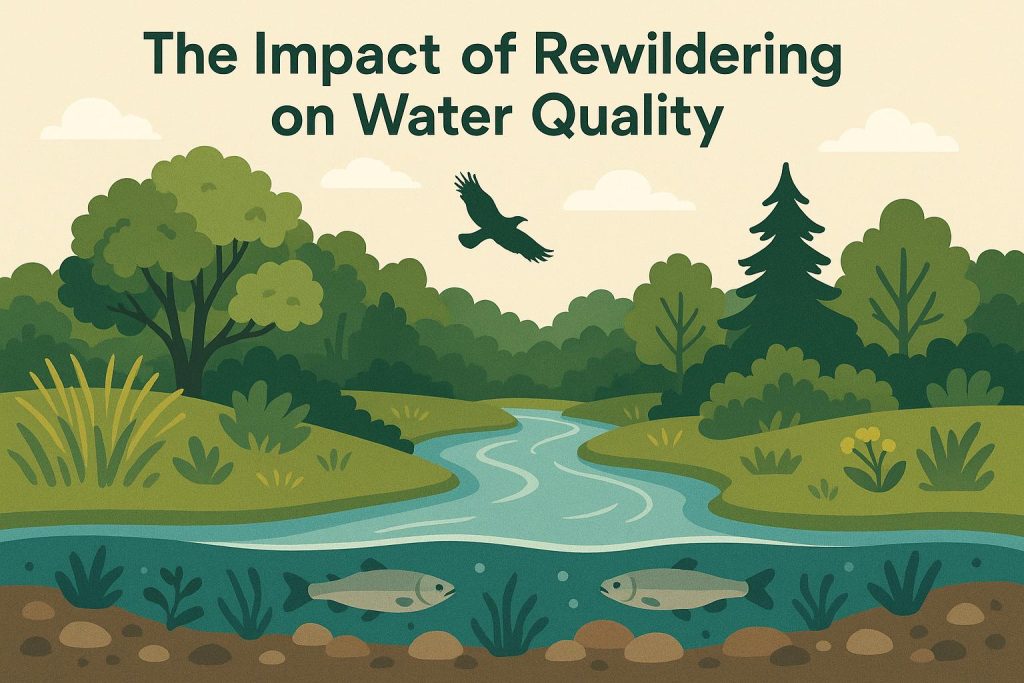
The Impact of Rewildering on Water Quality
The Connection Between Rewilding and Water Quality
Rewilding is an innovative conservation technique that emphasizes restoring natural ecosystems, allowing them to flourish with minimal human interference. This approach has garnered significant attention due to its potential to improve various environmental factors, notably water quality. By focusing on natural processes and habitats, rewilding offers insights and solutions for some of the pressing environmental challenges we face today.
Understanding Rewilding
At its core, rewilding encapsulates the idea of allowing natural landscapes to evolve autonomously. This concept often involves the reintroduction of native species, which can play pivotal roles in ecosystem dynamics. The goal is to foster self-regulating ecosystems that can sustain themselves without human intervention. Species such as beavers and wolves are commonly reintroduced as they hold critical roles in shaping their environments. By doing so, these species help in reinstating the natural processes that have been disrupted by human activities.
The Role of Vegetation
Vegetation plays a crucial role in rewilding and its impact on water quality. Restoring native plant life aids in natural filtration processes. Plants and trees serve as natural filters, capturing a wide range of pollutants and breaking them down before reaching water bodies. Their root systems stabilize the soil, thereby significantly reducing erosion and the subsequent sedimentation of rivers and lakes. With less soil erosion, there is a lower likelihood of nutrient and pollutant run-off into water bodies, leading to clearer and healthier water systems.
Impact of Wetlands
Wetlands are pivotal in the rewilding process. Often described as nature’s kidneys, wetlands are essential in cleansing the environment. As part of rewilding projects, restoring or expanding these wetlands can yield significant benefits for water quality. They function by filtering out pollutants and absorbing nutrients. Furthermore, wetlands act as buffers, slowing down water flow, which allows particulates and pollutants to settle rather than entering aquatic ecosystems. By providing such environmental services, wetlands help establish a natural balance, benefiting both the environment and human communities.
For further insights, one might explore more on the role of wetlands in rewilding through dedicated studies and literature.
Influence of Biodiversity on Water Quality
A profound benefit of rewilding is the enhancement of biodiversity, which in turn plays a significant role in improving water quality. A diverse range of plants and animals introduces numerous ecological interactions and processes that contribute to the health of ecosystems. Biodiverse ecosystems are adept at managing environmental stressors, ensuring resilience against changes and disturbances. Such ecosystems are inherently more capable of water purification and maintaining ecological balance.
The Beavers’ Example
Beavers are often spotlighted in rewilding projects due to their innate ability to construct wetlands through dam building. These engineered structures allow for increased water retention within landscapes. By creating these wetland areas, beavers help moderate flood peaks, as water flow is slowed and regulated. Their activities enhance filtration processes, trapping sediments and sequestering nutrients. By ensuring that fewer sediments and nutrients reach open water systems, beavers contribute significantly to sustaining water quality and ecosystem health.
Role of Predators
Predators play an intrinsic role in rewilded ecosystems. A robust predator population ensures the balance of prey species in an ecosystem, preventing any single species from becoming overly dominant. Such balance is crucial as overgrazing by unchecked prey populations can lead to soil erosion, negatively affecting water quality. Apex predators, such as wolves, can initiate trophic cascades which have far-reaching effects on ecosystem dynamics. These cascades often result in rejuvenated riparian zones and healthier waterways, illustrating the interconnectedness of ecosystem components.
Challenges and Considerations
Despite the numerous benefits rewilding brings to ecosystems and water quality, it is not without challenges. Successfully implementing rewilding initiatives requires nuanced management and planning. One primary consideration involves addressing potential human-wildlife conflicts. As ecosystems change, wildlife may occasionally encroach upon human settlements, necessitating strategies to mitigate these conflicts. Additionally, there is a need to balance ecological goals with agricultural and economic interests. Ensuring the livelihood of communities while pursuing conservation objectives can be complex but essential for the long-term success of rewilding efforts.
Moreover, changes brought by rewilding can take time, often requiring years, if not decades, to fully manifest. Restoration of degraded ecosystems is a gradual process, and patience is essential to observe tangible benefits. Stakeholders, from policymakers to local communities, need to understand the timeline and work cooperatively to realize these environmental goals.
In conclusion, rewilding represents a multifaceted approach with the potential to substantially enhance water quality by reinstating natural systems. By reintroducing native species and reestablishing dynamic habitats, these efforts support the resilience and sustainability of aquatic ecosystems. In doing so, rewilding not only benefits the environment but also contributes to the well-being of human populations, providing cleaner and healthier water resources. Through continued research, dialogue, and collaborative efforts, rewilding can be a cornerstone of future conservation strategies aimed at nurturing our planet’s ecological health.